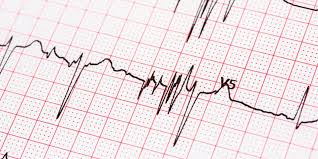Understanding Atrial Fibrillation (AFib): A Comprehensive Guide

Atrial Fibrillation (AFib) is a common heart condition characterized by irregular and often rapid heartbeats. In this comprehensive guide, we will delve into the details of AFib, including its causes, symptoms, diagnosis, treatment options, and lifestyle management strategies.
-
What is Atrial Fibrillation (AFib)?
- AFib is a type of arrhythmia, or irregular heartbeat, that occurs when the heart's upper chambers (atria) beat chaotically and out of sync with the lower chambers (ventricles).
- This irregular heartbeat can disrupt the heart's ability to pump blood effectively, leading to symptoms such as palpitations, shortness of breath, fatigue, and chest discomfort.
-
Causes and Risk Factors:
- AFib can be caused by various factors, including age, underlying heart conditions (such as hypertension, coronary artery disease, or heart valve disorders), obesity, diabetes, excessive alcohol consumption, and thyroid disorders.
- Certain lifestyle factors, such as smoking, stress, and sleep apnea, may also increase the risk of developing AFib.
-
Symptoms of AFib:
- Common symptoms of AFib include palpitations (a sensation of fluttering or pounding in the chest), fatigue, shortness of breath, dizziness, lightheadedness, chest pain or discomfort, and fainting.
- Some individuals with AFib may not experience any symptoms, and the condition may only be detected during routine medical exams or electrocardiogram (ECG) screenings.
-
Diagnosis:
- Diagnosis of AFib typically involves a thorough medical history review, physical examination, and various diagnostic tests, including an electrocardiogram (ECG or EKG), Holter monitor (a portable ECG device worn for an extended period), echocardiogram, and blood tests.
- These tests help healthcare professionals assess the heart's rhythm, structure, and overall function to confirm the presence of AFib and identify any underlying conditions contributing to the arrhythmia.
-
Treatment Options:
- Treatment for AFib aims to control heart rate, restore normal heart rhythm (rhythm control), prevent blood clots and reduce the risk of stroke, and manage underlying conditions contributing to AFib.
- Treatment options may include medications (such as antiarrhythmic drugs, beta-blockers, calcium channel blockers, and anticoagulants), cardioversion (electrical or chemical), catheter ablation, and surgical interventions (such as maze procedure or atrial fibrillation surgery).
-
Lifestyle Management:
- Lifestyle modifications play a crucial role in managing AFib and reducing the risk of complications. These may include maintaining a healthy weight, following a heart-healthy diet low in sodium and saturated fats, engaging in regular physical activity, managing stress, avoiding excessive alcohol and caffeine intake, quitting smoking, and adhering to prescribed medications and treatment plans.
-
Monitoring and Prognosis:
- Individuals with AFib require regular monitoring by healthcare professionals to assess their heart rhythm, adjust treatment as needed, and monitor for potential complications.
- With appropriate treatment and lifestyle modifications, many people with AFib can effectively manage their condition and lead active, fulfilling lives. However, untreated or poorly controlled AFib can increase the risk of stroke, heart failure, and other cardiovascular complications.
In conclusion, Atrial Fibrillation (AFib) is a common heart rhythm disorder characterized by irregular and often rapid heartbeats. While AFib can significantly impact a person's quality of life and increase the risk of serious complications, early diagnosis, appropriate treatment, and lifestyle modifications can help manage the condition effectively and reduce the risk of adverse outcomes. If you experience symptoms suggestive of AFib or have concerns about your heart health, it is essential to consult with a healthcare professional for proper evaluation and management.
